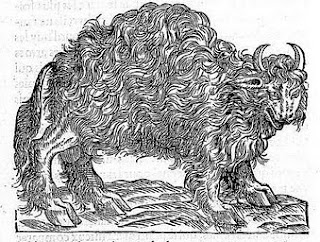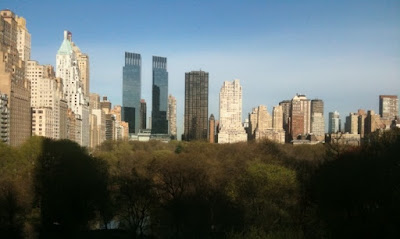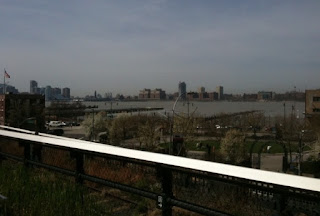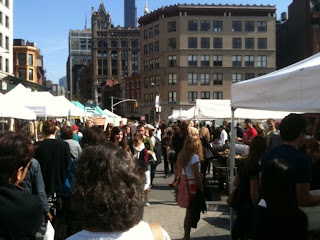Last Thursday got off to a grisly start in our West Austin neighborhood, bringing a stark reminder of the violence inherent in the way we humans live on the land. We usually attempt, more or less successfully, to keep this violence implicit—behind the walls of slaughterhouses, say, or with the cleanup crews who scrape the roadkill off our highways—but every once in a while it bursts forth in explicit, unimaginable horror, demanding to be acknowledged, as in the aftermath of oil spills. Or, on a much smaller scale, on our street last Thursday.
It was about 6:45 a.m. and Chula the Goggle-Eyed Ricochet Hound and I had just set out on our usual two-mile morning perambulation. As we turned the corner to climb the first big hill I saw S. and A., two of our neighbors, standing in A.’s front yard. The light was still tenebrous, and my eyes were still filled with morning blear, so I asked them, stupidly, if everything was okay.
In response, A. gestured at the spiked black steel fence that encloses his back yard and said, “Deer caught on the fence.” I looked again, and sure enough there was a young buck hanging from the top of the fence by one back leg, kicking occasionally in an attempt to get free. Since Chula was getting increasingly agitated, I pulled her away and continued up the hill.
When we returned, some time later, A., S., and the buck were gone. I allowed myself to hope that all had turned out well, but then I heard the unmistakable pop of a gunshot—an unusual sound in our part of Austin—and then another a few seconds later. When we got to the bottom of the hill, I saw a small group of men gathered around something by the curb.
I put Chula back inside and went to investigate. The object by the curb was the buck, his mangled hindquarters covered by a tarp, his eyes rolling around in his head, which thrashed and clattered against the pavement in his death agony. An astonishing amount of blood rolled down the gutter toward the storm drain.
A. filled me in on what had happened in my absence: while S. had gone to fetch a pistol to dispatch the creature, the buck had worked his way loose from the fence, but not before hopelessly mangling both his back legs in his frantic efforts to free himself. He somehow dragged himself across one street and two front yards (including ours) before they caught up with him again. S. fired once and missed, then fired again from point-blank range; unfortunately, as they discovered later, the second shot merely went through the buck’s cheeks, causing him to get up and haul himself across the street, where he finally collapsed in the gutter.
Unwilling to fire any more shots, S. and A. asked C., the neighbor in front of whose house the buck had collapsed, if he had a hunting knife. C. went back inside and got what A. later described as “the world’s dullest hunting knife.” S. hacked at the buck with the knife until he finally slit his throat, but, as A. said, “waiting for the buck to bleed to death became too much, so S. was able to sever its windpipe, which quickly—and thankfully—brought the deer’s life to an end.”
It was at this point that I wandered up. I’d been standing there only a few moments, trying to take in what I was witnessing, when A. looked over my shoulder and said, “Heather doesn’t need to see this.” I turned around and saw her walking toward our little group, and headed back to intercept her. As we walked back up our driveway, I noticed several spots of bright red blood, signs of the buck’s last agonizing procession toward its death. There were more bloodstains on our front walkway, and indeed all across our front yard.
Later, as I hosed some of those stains off, I thought about the other deer which had gotten hung up on A.’s fence last year, another beautiful young buck who managed to gut himself on one of the spikes and hung there, head down, slowly dying. It had been difficult not to think of Jesus hanging on the cross while looking at the helpless creature.
A. and his family had been out of town on vacation, and no one knows how long that buck had been hanging there before someone found him. None of the neighbors who were there that day had a gun—we keep all our family firearms out at Madroño—and eventually we called our local veterinarian, who finally came and administered a lethal injection. We carefully lifted the dead buck off the fence, and a man from the city parks department took the body away.
Deer have been living in close proximity to us—and sustaining us—for centuries. They are associated with Artemis/Diana in Greek and Roman mythology, and four stags feed on the world tree in Norse mythology. St. Hubertus, the patron saint of hunters, supposedly saw a crucifix on the head of a stag he’d been pursuing, and St. Giles (depicted above), the Greek hermit, lived with a doe as his only companion. The indigenous Huichol people of Mexico make offerings to the Deer of the Maize and the Deer of the Peyote, and in Shinto, deer are considered messengers to the gods. In Austin, many of us are accustomed to virtually tame deer foraging in our gardens. But the deer that died on A.’s fence, like the countless dead squirrels, raccoons, possums, and deer we see on our roads, remind us of the violence inherent when urban, automotive humanity impinges on wild (or even semi-wild) nature, or vice versa.
It’s silly to think that without us these animals’ lives would be free from suffering, pain, and terror; they all have numerous natural predators and parasites, after all, and those predators and parasites don’t go out of their way to kill humanely. (Sometimes I think it ironic that humane derives from the Middle English word for human, but the fact is we do have a choice in how we kill the animals we use.) And Madroño Ranch is, after all, in the business of selling bison meat, one of the requirements of which is first killing the bison, and we do derive income from hunting leases during deer season. But there’s something about the useless and prolonged horror of the way these deer died that hits me very hard. They weren’t shot for their meat; instead, mutilated by a symbol of human territoriality, they died slow, agonizing, gruesome deaths—victims, in effect, of our notions of private property. Where’s the redemption in that?
What we’re reading
Heather: Michael E. McCullough, Beyond Revenge: The Evolution of the Forgiveness Instinct
Martin: Glen David Gold, Sunnyside











